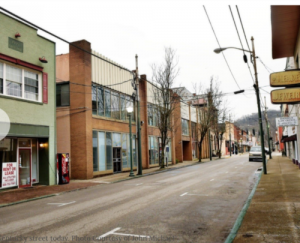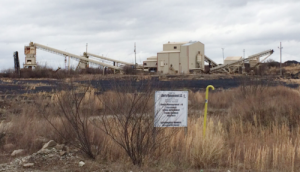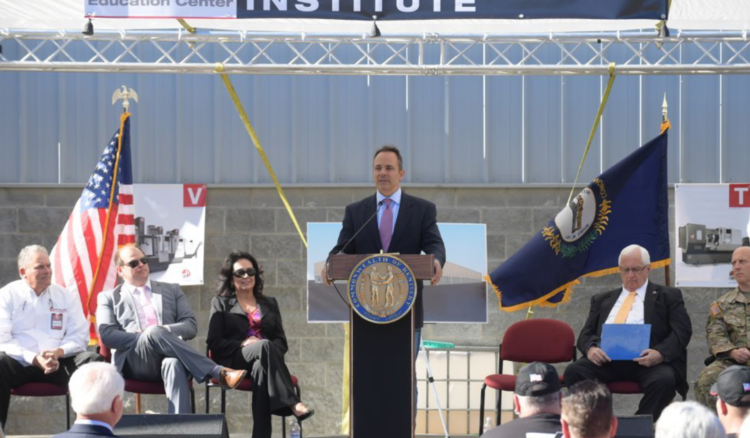
East Kentucky Pioneers: Three men from east Kentucky were typical of thousands of others in the region. Justin Cornett, Jonathan Ray and John Tackett had all been long time workers in the fossil fuel industry, following generations of family members. All three had responsibilities…families counting on them. So all three were stunned when the companies they worked for were forced to abruptly release them from their jobs. It is a difficult thing for a man to have part of his identity taken away, a part which drove him to work hard sixty and seventy hours a week to provide for his family. Little did the men know that though the future looked bleak, events would soon unfold that would give them the mantra of modern day pioneers.
“Hell isn’t merely paved with good intentions; it’s walled and roofed with them,” Aldous Huxley once said. Environmental activists may well have had good intentions when they sued regulatory agencies and declared a “war on coal,” but the repercussions of their actions have been great at, combined with a decrease in natural gas prices has led to the closing of multiple coal fueled power plants across the nation. The pain has yet to be fully realized. The effects the closures will have on grid stability during peak demand (such as during very cold or very hot weather) are as yet unknown. The Northeast came alarmingly close to a blackout during the “polar vortex” due to a shortage of natural gas delivery infrastructure. So called “sustainable” energy is incapable of producing a fraction of the nation’s energy requirements. The consequences of all of this have been significant nationally. In the coal mining communities in the east Kentucky region, they have been personal.
 Paintsville may be known to much of the outside world as a part of the region that gave birth to the “Queen of Country Music,” Loretta Lynn and renowned country music star, Chris Stapleton. It should be known for a much greater contribution to the national well-being. As far back as the 1880’s, John C. C. Mayo recognized the value of Eastern Kentucky coal as one of the richest sources of energy in the world. Mayo began to buy land and mineral rights around Paintsville, leading to a vibrant local economy. At its peak, coal mining provided nine thousand high paying jobs in Paintsville and Johnson County. Those jobs, and the local taxes paid by the coal industry, contributed to a massive economic multiplier e ect. Kentucky also enjoyed some of the lowest electric rates in the country, making it a strong draw for other industry and thus additional employers.
Paintsville may be known to much of the outside world as a part of the region that gave birth to the “Queen of Country Music,” Loretta Lynn and renowned country music star, Chris Stapleton. It should be known for a much greater contribution to the national well-being. As far back as the 1880’s, John C. C. Mayo recognized the value of Eastern Kentucky coal as one of the richest sources of energy in the world. Mayo began to buy land and mineral rights around Paintsville, leading to a vibrant local economy. At its peak, coal mining provided nine thousand high paying jobs in Paintsville and Johnson County. Those jobs, and the local taxes paid by the coal industry, contributed to a massive economic multiplier e ect. Kentucky also enjoyed some of the lowest electric rates in the country, making it a strong draw for other industry and thus additional employers.
With the passage of the 1990 Amendment to the Clean Air Act, the economic boom began to level off . Earlier versions of this Act had markedly positive effects on the environment and on power plant emissions from coal fueled power plants. However, a compelling case can be made that the 1990 Amendment contained provisions that created some diminishing environmental returns.
To comply with stringent regulations, power producers were forced to either install multi-million dollar pollution control equipment or to convert their plants to burn lower sulfur coal, a conversion that was more economical but still cost millions. Over the last six to ten years, with the inclusion of EPA attempts to control greenhouse gases (GHG) via the clean air act, the regulatory environment has become nearly draconian. So many regulations have been unleashed on the power generation industry that the American Legislative Exchange Council dubbed the years 2011 to 2017 as “a regulatory train wreck.”
Kathy Walker has spent her entire career in the coal sales business. An expert in coal market trends, Mrs. Walker foresaw that there would be casualties in the “war on coal.” Before the job losses started, she realized that coal miners would soon need new marketable skills in order to provide for their families.
“ There are a lot of job training programs out there,” Walker said. “But in order for a program to be effective it must be a fit for the community and people it is intended to help. I strongly believed that any program that I would be willing to get behind would need to take into consideration the geographic location, the local culture, and the needs of the people.”
Walker knew that coal miners were industrious, self-sufficient, “work with their hands” kind of folks. She believed that the recipe for sustainability had to match with the inherent skill set.
“I knew that east Kentucky was filled with guys who were stressed about being out of work. Even though some were in their fifties, they were ready and willing to learn new skills, and even relocate if necessary. But it was only fitting that the new training play to their strengths.”
 Gene Haas’ life is about as close to an all-American success story as you can get. During his college years he spent his summers working in a machine shop. After graduation he operated and programmed CNC (Computer Numerical Controlled) Lathe machines. During that time, and later as owner of his own machine shop, he came up with a “better mousetrap.” Eventually, Haas and a partner would design and build a more a ordable and user friendly machine, the Haas CNC Lathe. Mr. Haas began selling his new lathe, eventually growing to one billion dollars in annual sales worldwide.
Gene Haas’ life is about as close to an all-American success story as you can get. During his college years he spent his summers working in a machine shop. After graduation he operated and programmed CNC (Computer Numerical Controlled) Lathe machines. During that time, and later as owner of his own machine shop, he came up with a “better mousetrap.” Eventually, Haas and a partner would design and build a more a ordable and user friendly machine, the Haas CNC Lathe. Mr. Haas began selling his new lathe, eventually growing to one billion dollars in annual sales worldwide.
As the company grew, Haas began to realize that demand for his machines was being limited by a shortage of workers who possessed the skills needed to operate them. He determined to take an active role and to make a significant financial commitment to helping highly motivated workers acquire those skills. From that determination, the Haas Foundation was born. One goal of the foundation is to establish Advanced Manufacturing Institutes that will graduate job-ready machinists.

As Walker worked to have a Haas Technical Education Center (HTEC) established in Paintsville, some individuals came to the forefront with doubts about the concept. Opponents raised issues of the capability of the ex-coal miners to grasp the mathematics required to program and operate the CNC machines. That’s where Cornett, Ray and Tackett came in. These “East Kentucky Pioneers” were determined to prove doubters wrong.
Walker got in touch with the previously established Haas training center at Vincennes University in nearby Indiana. The center was willing to admit the three Kentuckians but they would be three weeks behind, since the classes had already begun. No matter, the pioneers were highly motivated by thoughts of their families back home. They soon put in the work to not only catch up, but ultimately to graduate at the top of their class. Walker knows her community and she knows there are thousands more willing workers just like these three men.
Manufacturing around the globe is experiencing a shortage of skilled labor, Eastern Kentucky has a wealth of highly motivated industrious people eager for an opportunity, and the Commonwealth has a Governor who “loves manufacturing.” The groundbreaking for the state of the art Gene Haas eKentucky Advanced Manufacturing Institute represented the joint efforts of the private sector, individual citizens who cared deeply enough to volunteer hundreds of hours of their own time, and the Commonwealth of Kentucky. It’s a partnership that promises to pay ongoing dividends to the citizens of the Commonwealth by turning those who were unemployed into a skilled workforce, which will be hugely attractive to manufacturers. Those companies will now be much more likely to locate new facilities in an area rich in natural skill – Kentucky. A giant step has been taken toward fulfilling Governor Bevin’s vision to make Kentucky the nation’s number one hub of manufacturing excellence. With a workforce of exceptionally capable, willing, and motivated people, East Kentucky has just the answer to manufacturing‘s biggest challenge.
Chris Skates is a Kentucky based freelance writer and author.




